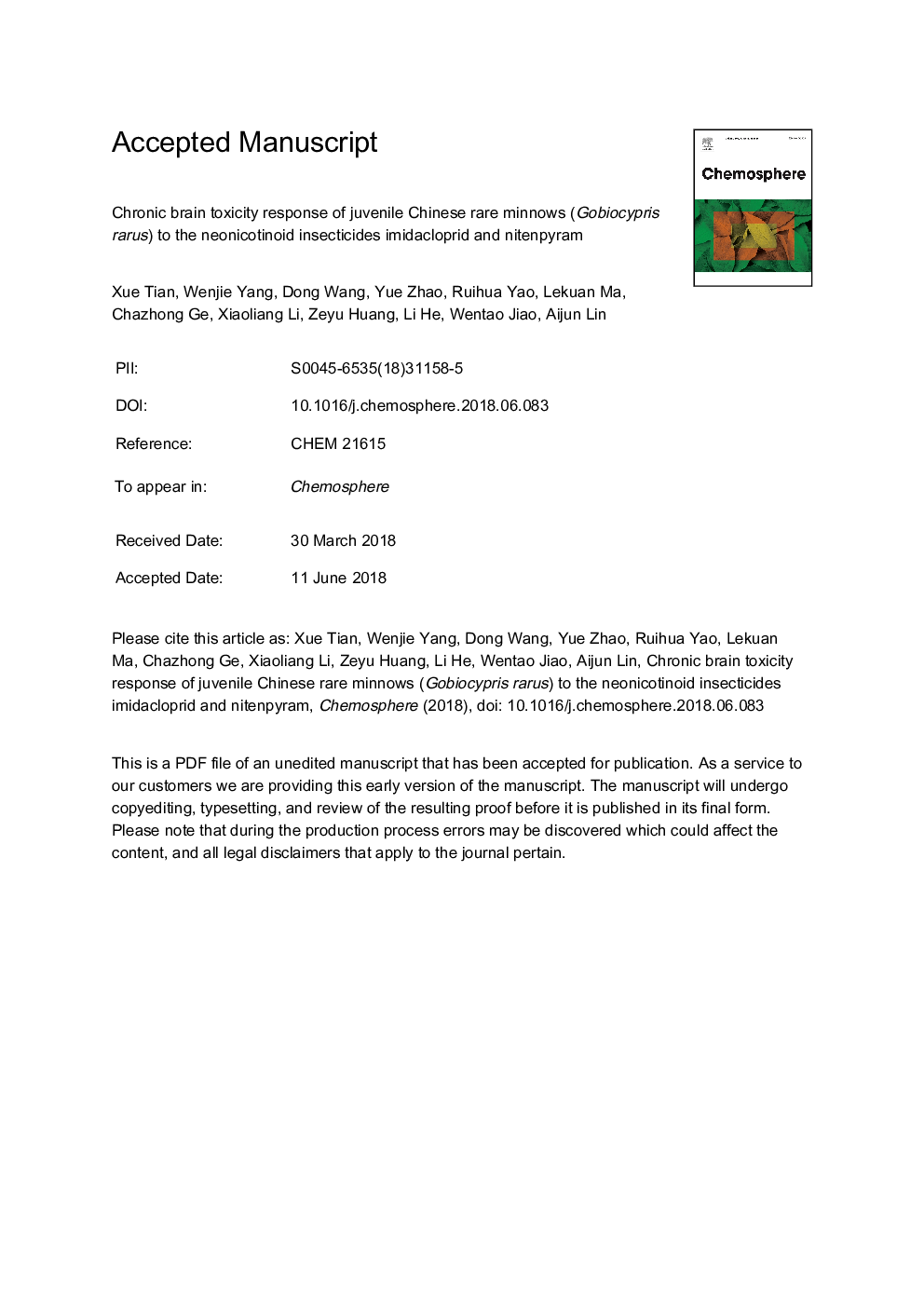| Article ID | Journal | Published Year | Pages | File Type |
|---|---|---|---|---|
| 8850474 | Chemosphere | 2018 | 28 Pages |
Abstract
Imidacloprid and nitenpyram are widely used neonicotinoid pesticides worldwide and were observed to adversely affect non-target aquatic organisms. In this study, the toxic effect of imidacloprid and nitenpyram on the brain of juvenile Chinese rare minnows (Gobiocypris rarus) was investigated by determining the oxidative stress, 8-hydroxy-2-deoxyguanosine (8-OHdG) content and acetylcholinesterase (AChE) activity. The superoxide dismutase (SOD) activities did not significantly change after long-term exposure to imidacloprid and nitenpyram. A noticeable increase of catalase (CAT) activities was observed on the brain tissues under 0.1â¯mg/L imidacloprid and under all nitenpyram treatments (pâ¯<â¯0.05). The malondialdehyde (MDA) content increased markedly under 2.0â¯mg/L imidacloprid and 0.1â¯mg/L nitenpyram treatments (pâ¯<â¯0.05). The glutathione (GSH) content in the brain significantly increased under 0.5 and 2.0â¯mg/L imidacloprid (pâ¯<â¯0.05). A significant decrease was observed in the mRNA levels of Cu/Zn-sod under 2.0â¯mg/L imidacloprid and those of cat under 0.1 and 0.5â¯mg/L nitenpyram (pâ¯<â¯0.05). The mRNA levels of gpx1 clearly decreased under 2.0â¯mg/L imidacloprid and under 0.1â¯mg/L nitenpyram (pâ¯<â¯0.05). The treatments of 0.1 and 0.5â¯mg/L nitenpyram decreased cat expression levels markedly (pâ¯<â¯0.05). 2.0â¯mg/L imidacloprid raised the 8-OHdG content. The AChE activities increased markedly under 0.5 and 2.0â¯mg/L imidacloprid while clearly decreasing under 2.0â¯mg/L nitenpyram (pâ¯<â¯0.05). Therefore, our results indicate that imidacloprid and nitenpyram might cause adverse effects on juvenile Chinese rare minnows brain. Notably, imidacloprid had greater impacts on juvenile rare minnows compared to nitenpyram.
Related Topics
Life Sciences
Environmental Science
Environmental Chemistry
Authors
Xue Tian, Wenjie Yang, Dong Wang, Yue Zhao, Ruihua Yao, Lekuan Ma, Chazhong Ge, Xiaoliang Li, Zeyu Huang, Li He, Wentao Jiao, Aijun Lin,
